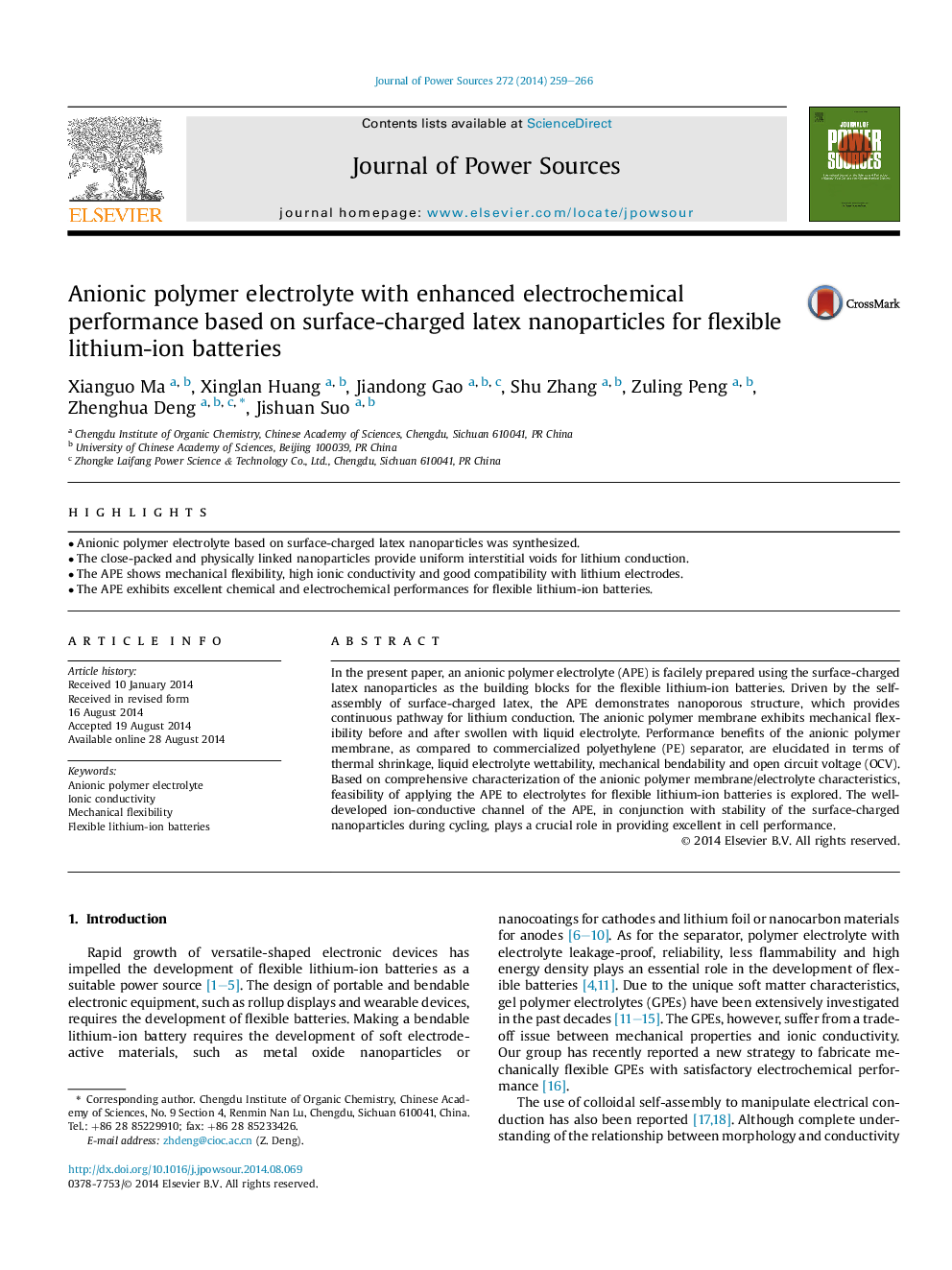| Article ID | Journal | Published Year | Pages | File Type |
|---|---|---|---|---|
| 1283988 | Journal of Power Sources | 2014 | 8 Pages |
•Anionic polymer electrolyte based on surface-charged latex nanoparticles was synthesized.•The close-packed and physically linked nanoparticles provide uniform interstitial voids for lithium conduction.•The APE shows mechanical flexibility, high ionic conductivity and good compatibility with lithium electrodes.•The APE exhibits excellent chemical and electrochemical performances for flexible lithium-ion batteries.
In the present paper, an anionic polymer electrolyte (APE) is facilely prepared using the surface-charged latex nanoparticles as the building blocks for the flexible lithium-ion batteries. Driven by the self-assembly of surface-charged latex, the APE demonstrates nanoporous structure, which provides continuous pathway for lithium conduction. The anionic polymer membrane exhibits mechanical flexibility before and after swollen with liquid electrolyte. Performance benefits of the anionic polymer membrane, as compared to commercialized polyethylene (PE) separator, are elucidated in terms of thermal shrinkage, liquid electrolyte wettability, mechanical bendability and open circuit voltage (OCV). Based on comprehensive characterization of the anionic polymer membrane/electrolyte characteristics, feasibility of applying the APE to electrolytes for flexible lithium-ion batteries is explored. The well-developed ion-conductive channel of the APE, in conjunction with stability of the surface-charged nanoparticles during cycling, plays a crucial role in providing excellent in cell performance.
